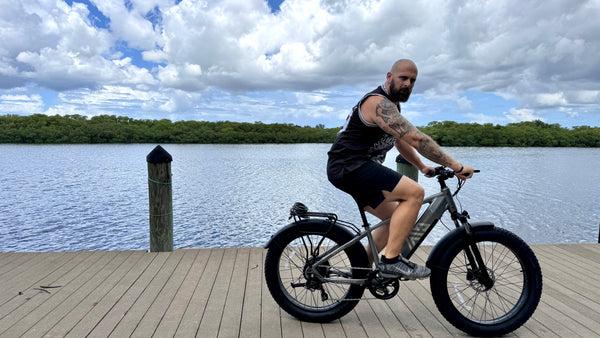E-Bikes for Disaster Preparedness?
When it comes to disaster preparedness, electric bicycles, or E-bikes, offer a compelling solution to those preparing for grid-down scenarios or extreme disasters (and the potentially ensuing societal collapse). One of the key advantages of E-bikes is their dual functionality. Even if an EMP or lack of charging infrastructure renders the electric motor useless, many E-bikes can still be pedaled like traditional bicycles. This can ensure a reliable mode of transportation regardless of electrical availability. Furthermore, the unfortunate reality is that many people are not physically prepared for the demands of social unrest or major disasters. For those unaccustomed to walking or running long distances, an E-bike provides a means to cover significant ground without requiring peak physical fitness, making it an important consideration for most preppers.
The electric feature of E-bikes enhances their utility, usability, and effectiveness. They allow for quick and quiet travel over long distances with minimal energy expenditure, which can be useful in avoiding attention. They can even be stealthy when equipped and utilized towards that end. Additionally, E-bikes can be modified to carry cargo, making them invaluable for transporting supplies and equipment when access to resources is limited. Their ability to navigate off-road trails or narrow passages while bypassing obstacles that cars cannot is another significant advantage. In scenarios where traditional roads may be blocked by heavy traffic or abandoned vehicles, bicycles can still get through.
However, there are notable drawbacks to consider. E-bikes can be expensive, with quality models often costing several thousand dollars. This high cost may be prohibitive for some preppers. Additionally, the reliance on batteries and the need for charging pose challenges for prolonged usage, especially if the electrical grid is questionable. While solar chargers and alternative methods exist, they may not always be practical... and definitely represent further expenses. E-bikes are also heavier than traditional bicycles, making them harder to pedal without electric assistance. Despite these disadvantages, the benefits of having a reliable and efficient means of transportation in a disaster scenario make E-bikes a valuable asset for those serious about preparedness. Investing in an E-bike could provide mobility, flexibility, and fun in your current daily life while adding many potential advantages for a theoretical post-disaster world.
The E-bikes I've tested personally, own, and can recommend are as follows:
GoTrax: https://alnk.to/faBByKR
TROXUS: https://shareasale.com/r.cfm?b=2127166&u=3011027&m=130011&urllink=&afftrack=
TST: https://tstebike.com/?ref=wwfjxsui



